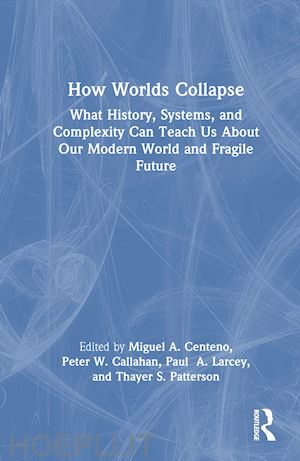Introduction Section 1: Theory and Insights of Historical Collapse 1. Globalization and Fragility: A Systems Approach to CollapseMiguel A. Centeno, Peter W. Callahan, Paul A.Larcey, and Thayer Patterson S. 2. How Scholars Explain CollapseJoseph A. Tainter 3. Diminishing Returns on Extraction: How Inequality and Extractive Hierarchy Create FragilityLuke Kemp 4. Collapse, Recovery, and Existential RiskHaydn Belfield Section 2: Historical and Archaeological Investigations of Collapse 5. "Mind the Gap": The 1177 BCE Late Bronze Age Collapse and Some Preliminary Thoughts on Its Immediate AftermathEric H. Cline 6. The End of "Peak Empire": The Collapse of the Roman, Han, and Jin EmpiresWalter Scheidel 7. Collapse and Non-collapse: The Case of Byzantium ca. 650-800 CEJohn Haldon 8. Fluctuat Nec Mergitur: Seven Centuries of Pueblo Crisis and ResilienceTimothy A. Kohler, R. Kyle Bocinsky, and Darcy Bird 9. Episodes of the Feathered Serpent: Aztec Imperialism and CollapseDeborah L. Nichols, Ryan H. Collins 10. The Black Death: Collapse, Resilience, and TransformationSamuel K. Cohn, Jr 11. The Cases of Novgorod and Muscovy: Using Systems Thinking to Understand Historical Civilizational Response to Exogenous ThreatsMiriam Pollock, Benjamin D. Trump, andIgor Linkov 12. Resilience of the Simple? Lessons from the Blockade of LeningradJeffrey K. Hass Section 3: Systemic Collapse Insights from Ecology, Climate, and the Environment 13. Climate Change and Tipping Points in Historical CollapseTimothy M.Lenton 14. Conservation of Fragility and the Collapse of Social OrdersJohn M. Anderies andSimon A. Levin 15. Resilience and Collapse in Bee Societies and CommunitiesChristina M. Grozinger andHarland M. Patch Section 4: Future Systemic Collapse and Quantitative Modeling 16. Producing Collapse: Nuclear Weapons as Preparation to End CivilizationZia Mian andBenoît Pelopidas 17. From Wild West to Mad Max: Transition in CivilizationsRichard Bookstaber 18. Phase Transitions and the Theory of Early Warning Indicators for Critical TransitionsGeorge I. Hagstrom andSimon A. Levin 19. The Lifespan of Civilizations: Do Societies "Age," or Is Collapse Just Bad Luck?Anders Sandberg 20. Multipath Forecasting: The Aftermath of the 2020 American CrisisPeter Turchin











